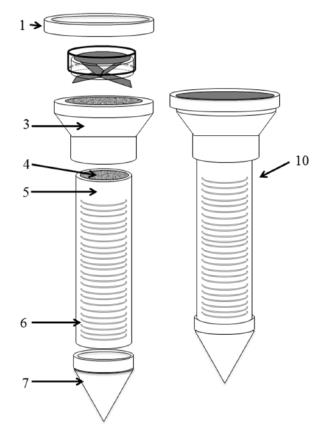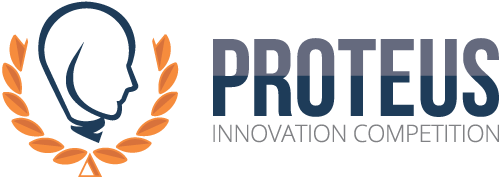Proteus 2021
We would like to thank all the teams that took part in 2020/21
Despite the challenges of a global pandemic and operating in a virtual environment, the 2020-2021 Proteus Innovation Competition was a huge success. We welcomed new partner institutions and saw our highest number of participants in the competition’s 6 year history. We continue to see submissions and pitches that impress our judges more and more each year. We thank all participants and congratulate the winners for an outstanding competition. We are pleased to award over $25k in prizes to the winners listed below.
2020/21 Winners
Congratulations to the following competition winners who received $5k cash prizes and the opportunity to license the technologies:
Winner: CAD15 Consultants
Western’s Pain Measurement Application
Connor Buffel, Kevin Parker
Winner: RubberCycle
McMaster’s Recycle Vulcanized Rubbers to Organic Polymers
Ryan Krause, Matthew Fung, Anusha Samarabandu, Irene Zhu
Winner: BioGryphs
Guelph’s Muscle Training and Recovery Device
Rebecca Bradley, Brooke Rathie
Winner: vGen Solutions
Windsor’s Forming Multiple Disulfide Bonds in a Peptide
Connor Holmes, Farshad Murtada, Rick Sudgen, Jason Liu
*vGen Solutions also won the $1k Audience Choice Award.
2020/21 Runner-ups
We want to give an honourable mention to the runner-ups who made it to the pitch phase of the competition. Well done!
Runner-up: Levis
Western’s Pain Measurement Application
Dhanisa Modi, Dhaimil Modi
Runner-up: FloStim Tech
Guelph’s Muscle Training and Recovery Device
Kathy Ha, Kristian Hau, Riya Misra, Vedha Patel
Runner-up: IDI6
McMaster’s Recycle Vulcanized Rubbers to Organic Polymers
Alessandra Mariella, Apery Kira, Janadhi Kuruppu, Maahum Ahmad, Rachel Ding, Srishti Prashar
Runner-up: Strive Terra
Laurier’s Phytotoxicological Field-Based Monitoring Device
Glynis Davies, Kaelah McLennan, Keyra Kam
Runner-up: Avicenna Biotech
Windsor’s Forming Multiple Disulfide Bonds in a Peptide
Saghar Mazarei, Leah Seo
2020/21 In Review
Individuals across 5 technologies
Teams registered
Teams passed Stage 1
Teams passed Stage 2
Winners
2020/21 Technologies
View details from each of the six technologies by clicking on the left menu below.
Note: University of Waterloo withdrew their technology from the competition so no teams developed business plans or pitches for this technology.
- Pain Measurement Application
- Recycle Vulcanized Rubbers to Organic Polymers
- Forming Multiple Disulfide Bonds in a Peptide
- Multimedia Content Enabling System
- Muscle Training and Recovery Device
- Phytotoxicological Field-Based Monitoring Device

Multidimensional Pain Measurement Application Tool
Summary
Robust and Innovative Aid in the Clinical Management of people with chronic pain by applying new assessment to the way pain is measured.
Background
Pain and distress are difficult to quantify common to almost all illnesses, and according to the National Institute of Health (NIH), affects more individuals than cancer, heart disease and diabetes combined. Patient-Reported Outcomes (PROs) are commonly used by medical professionals to evaluate a patient’s condition. However; research shows accurate pain quantification must include other factors such as pain quality, frequency, number of body regions, and temporality of the pain.
Technology Overview
Researchers at Western University have developed a robust and innovative aid in the clinical management of people with musculoskeletal pain, disability, or related conditions by applying new factors to the way pain is measured using a single tool. Through the novel questionnaire and various metrics, paired with in app (or spreadsheet) scoring and computation, healthcare providers can collect more accurate information to aid patients. The multi-dimensional symptom index first asks the patient to categorize the symptom, then asks about frequency of the symptom, and finally asks to rate the intensity. This innovation provides more data than other traditional methods and is more intuitive for patients.
This technology offers more precision over current practice guidelines and acts as a catalyst for the development of pain management strategies using a single tool.
Benefits
- New tool for pain researchers
- Can lead to better practice with respect to pain management decisions
- Improved recovery definition from common musculoskeletal problems
- Enhanced measurement capability can benefit the chronic pain clinical population
- Multi-dimensional and factorial assessment: cognitive interference, depression, fatigue, etc. all factor into the overall quality of health of a patient
- Provides a comprehensive overview of patient’s pain and health status.
- Enhances patient-provider communication.
- Low-cost and easy to implement
Applications
- Point-of-care diagnostics
- Software Application Development
- Medical care
- Rehabilitation
- Pain management
- Chronic pain management

New Chemistry to Recycle Vulcanized Rubbers Back to Organic Polymers
Background
With a global demand for tires expected to reach 3.2 billion units by 2022, we can expect rubber waste from these facilities to increase as well.1 Most automotive rubber tires are vulcanized (crosslinked by sulfur) to make them hard-wearing, and there are no highly efficient means of converting the rubber back into useful organic polymers. Instead, these rubbers are used for energy production, processed into crumb for relatively low value applications or pyrolyzed to make recover some of the hydrocarbons; in many jurisdictions, they are collected or sent to land fills.
Researchers at McMaster have developed a mild and efficient method to break the sulfur-sulfur bonds that hold these vulcanized rubbers together to recover the organic polymers originally used to make the tire; they may be reused to create new products. The inorganic components in such rubber products (e.g. carbon black, metal wires, etc.) can also be readily separated and reused for a variety of applications.
Applications
- Recycling tire rubber in the automotive industry
- Recovery of organic polymers from vulcanized rubbers
Advantages
- Mild and efficient method to recycle vulcanized rubbers
- Recovery of organic polymers for sustainable reuse of vulcanized rubbers within tires and other applications
- Recovery of other tire constituents – steel, cord, fillers – for reuse
- Reduction of safety hazards and environmental impact of stockpiled tires and landfills
News/Media
- McMaster chemists find new way to break down old tires into material for new ones
- Hamilton scientists find way to dissolve, recycle rubber from car tires
Figures/Images
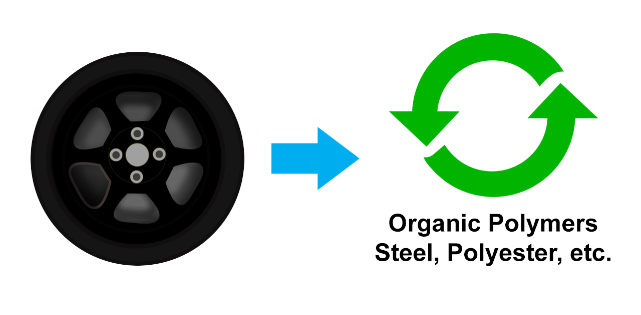

Streamlined Method for Forming Multiple Disulfide Bonds in a Peptide
Background
Disulfide bonds are common motifs in proteins and are especially important in biologically-active peptides used as therapeutics and diagnostics, such as insulin and conotoxins. Accurate disulfide bonds form between two specific cysteine residues within peptides and is critical for getting the correct 3-dimensional structure. Current chemical syntheses of peptide with multiple cysteines require expensive complex multi-step protocols and result in undesired non-specific disulfide bonds, low yields, and difficult purification. This technology overcomes these challenges using thermally-labile cysteine protecting groups and ultimately provides a cheaper and simpler solution to forming complex cysteine bridges during peptide synthesis.
Technology Overview
The inventors have devised a method where thermally-labile cysteine protecting groups cleave at controlled temperature thresholds to form accurate multiple disulfide bonds in a specific order. These cystine-protecting groups are incorporated as tailored pairs during the standard solid-phase peptide synthesis. The gradual heating of peptide in suspension to the respective “threshold temperatures” causing the specific cysteine-residue pair end caps to fall off allowing the formation of a disulfide bond at the desired temperature while other remaining sets of protected cysteine residues can remain bonded at that temperature. The temperature is then increased to the “second threshold temperature” to cleave the next set of end-cap pair and so forth, resulting in controlled cysteine bonds and functional three-dimensional peptide structure. Cleavage of the protecting groups is monitored by adsorption spectroscopy, a technique often used to monitor other aspects of peptide chemistry. The inventors have established a library of thermally-labile protecting groups and have demonstrated that they can be used in relevant peptides.
Benefits
- Ability to form multiple disulfide bonds in a peptide – ability to form 5+ bonds compared to a maximum of 3 bonds capable with current methods
- One-pot synthesis minimizing transfers, manipulations, and operations
- Rapid synthesis – duration of 1-1.5 days vs. 7 days with current methods.
- Increased yield – 2-5 times more compared to current methods.
- Easy integration into peptide synthesizers – just 1 step required compared to 3 with current methods
Figures/Images
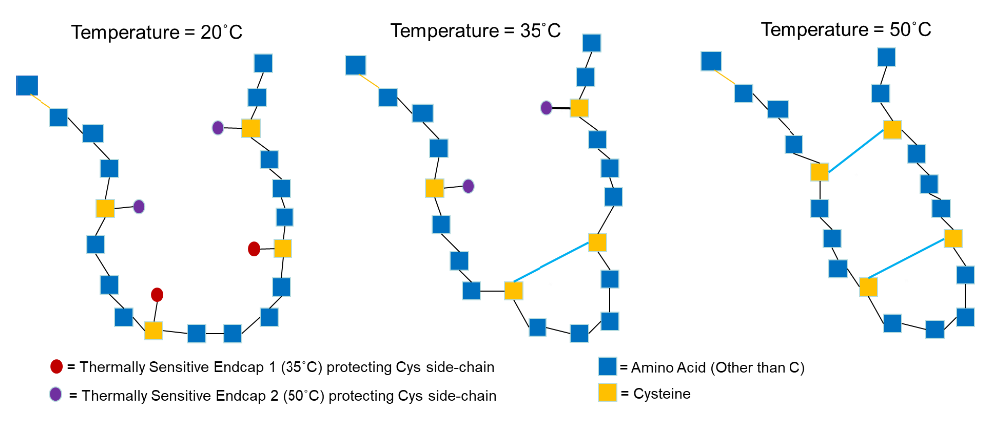

Multimedia Content Enabling System
Background
Ever increasing wireless connectivity, computational power, cloud storage, connected sensors and a breadth of user engaging Apps have enabled smartphones to play a role in almost all our daily activities. With this shift to mobile connectivity, companies are highly motivated to engage their customers through targeted mobile advertisements, loyalty programs and coupon distribution. The challenge however is that pushing advertisement to customers is often viewed as a nuisance or worse as an invasion of their privacy leading to negative brand sentiment. Ideally companies would prefer mobile marketing platforms that are driven by customers proactively seeking out content that provides a valuable user experience to them.
Technology Overview
The University of Waterloo has developed a wireless mobile platform that enables users to request location based multimedia content driven by sensory stimulus motivation. For instance a sensory stimulus such as visual observation of digital signage or scents arising from fragrances (e.g. perfumes) may motivate consumers to reactively actuate their smartphones Apps to access information regarding the provided sensory content or have it sent to their cloud accounts for later reference and use.
Benefits
The invention engages customers in a way that drives them to seek out information about pleasant sensory experiences they are exposed to. This enables companies to provide advertisements, coupons, and in-App purchasing opportunities in a brand friendly user “pull” manner.
Applications
One application currently prototyped targets live entertainment experiences (e.g. concert) to offer event attendees a solution to taking smartphone photos that otherwise suffer from on-board technology limitations that often lead to grainy and poor quality photos (under typically poor lighting situations). Typically fans are passionate in their support of the artist and many desire to have memorable photo keepsakes from such a sensory experience (ie. photo performing fan’s favourite song). The Waterloo system utilizes a combination of smartphone App software with novel device hardware connected to live event display screens (ie. stadium jumbotron) that enables event attendees to capture photos or short video clips from the live feeds displayed on the venue display screens. This enables attendees to develop a personalized package of high resolution pictures and/or video clips that can be directly downloaded to their smartphones or stored on their cloud storage account. This “user” pull application enables marketing sponsorship opportunities to provide companion advertising, couponing, and in-App purchases as part of this user engagement experience. This service will also likely appeal to the artists who are very conscious of their “image” and this enables them to manage their visual images by offering fans pictures from desired angles, postures, and highlight moments. It also provides them a revenue sharing opportunity for in-App purchases (eg. photos, other artist products, such as t-shirts, etc.). Other applications include: live sports events, convocations, and location linked product advertising and sales.
Figures/Images
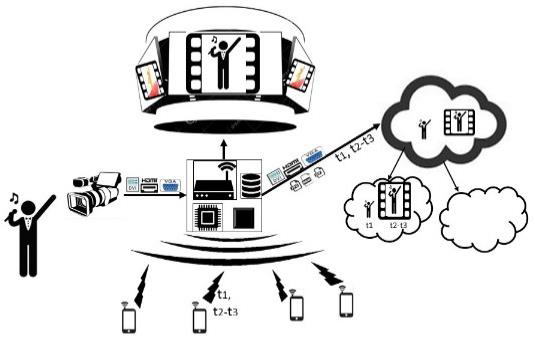

Muscle Training And Recovery Device
Technology Overview
The technology is a physical training or recovery apparatus that features simultaneous blood flow restriction and electrical muscle stimulation.
Existing technologies used in hospital settings or in sports applications use one of compression (blood flow restriction) or electrical stimulation. Technologies with compression provide pneumatic pressure, but only target lymphatic and venous return through external pressure. These approaches do not act on the muscles, so exercise related alterations affecting protein synthesis/breakdown or glucose metabolism are not enacted. Technologies using electrical stimulation have also been sub-optimal as they produce substantial pain when applied with sufficient intensity to elicit the required response.
The Portable Training and Recovery Device delivers a unique combination of blood flow restriction and electrical muscle stimulation. Several studies now show the impact of combining blood flow restricted electrical stimulation on muscle strength.
Applications
- Professional/elite athlete sport training and recovery
- Recovery from trauma or surgery
Figures/Images
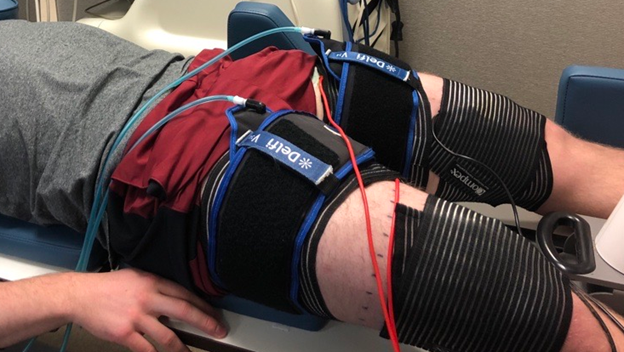

Phytotoxicological Device for Environmental Field-Based Monitoring
Technology Overview
Ecotoxicology data is a fundamental requirement for Environmental Risk/Impact Assessments (ERA and EIA) that are used to estimate or predict adverse environmental effects due to chemical exposure. Government, industry (e.g. pharmaceutical, agrochemical, mining) and independent laboratories utilize standard testing methods to identify and characterize potential hazards of chemicals to a range of organisms, such as birds, fish, plants and microorganisms. Existing phytotoxicity testing methods assess the effects of actives on seed germination, seedling emergence and vegetative vigor in laboratory-controlled environments, which do not accurately represent the complex interactions that occur in biotic systems. Furthermore, site sampling of soil/water only captures conditions at one point in time. Such approaches provide inadequate data and limits the ability of industry and environmental regulators to make informed decisions on land remediation efforts.
Our proprietary technology is a phyto-ecological monitoring device that enables assays to be conducted on-site to obtain a direct assessment of soil/water toxicity. In brief, the device consists of a delivery chamber that is inserted into wet soils or sediment, a porous media within the delivery chamber that delivers exposure water to cartridge housing, and a selection of replaceable cartridges that are inserted into the cartridge housing to contain the test organisms (i.e. plant seed or fungus spore).
Benefits
- Simple and cost-effective
- Rapid assessment, ranging between days to 1-3 weeks (instead of months for lab-based tests)
- Portable and field-deployable, allowing for site-specific risk assessments of contaminants
- Continuous flow, realistic exposure conditions
- Enables concurrent chemical analyses by sampling plant tissues
Applications
Site-specific risk assessments of contaminated sites for: Oil, mining, chemical, industrial manufacturing, transportation, agriculture, and wastewater treatment industries
Figures/Images
